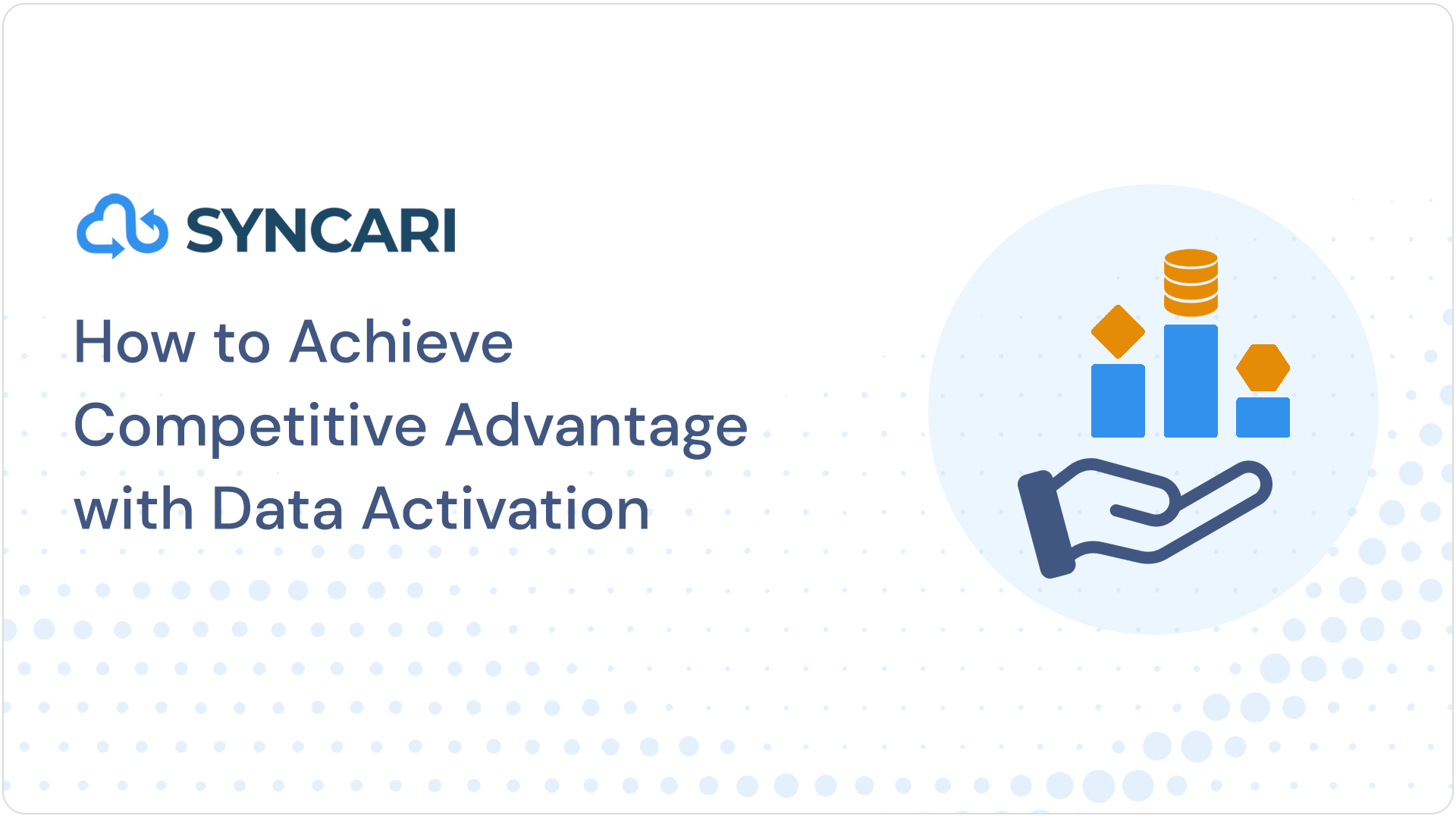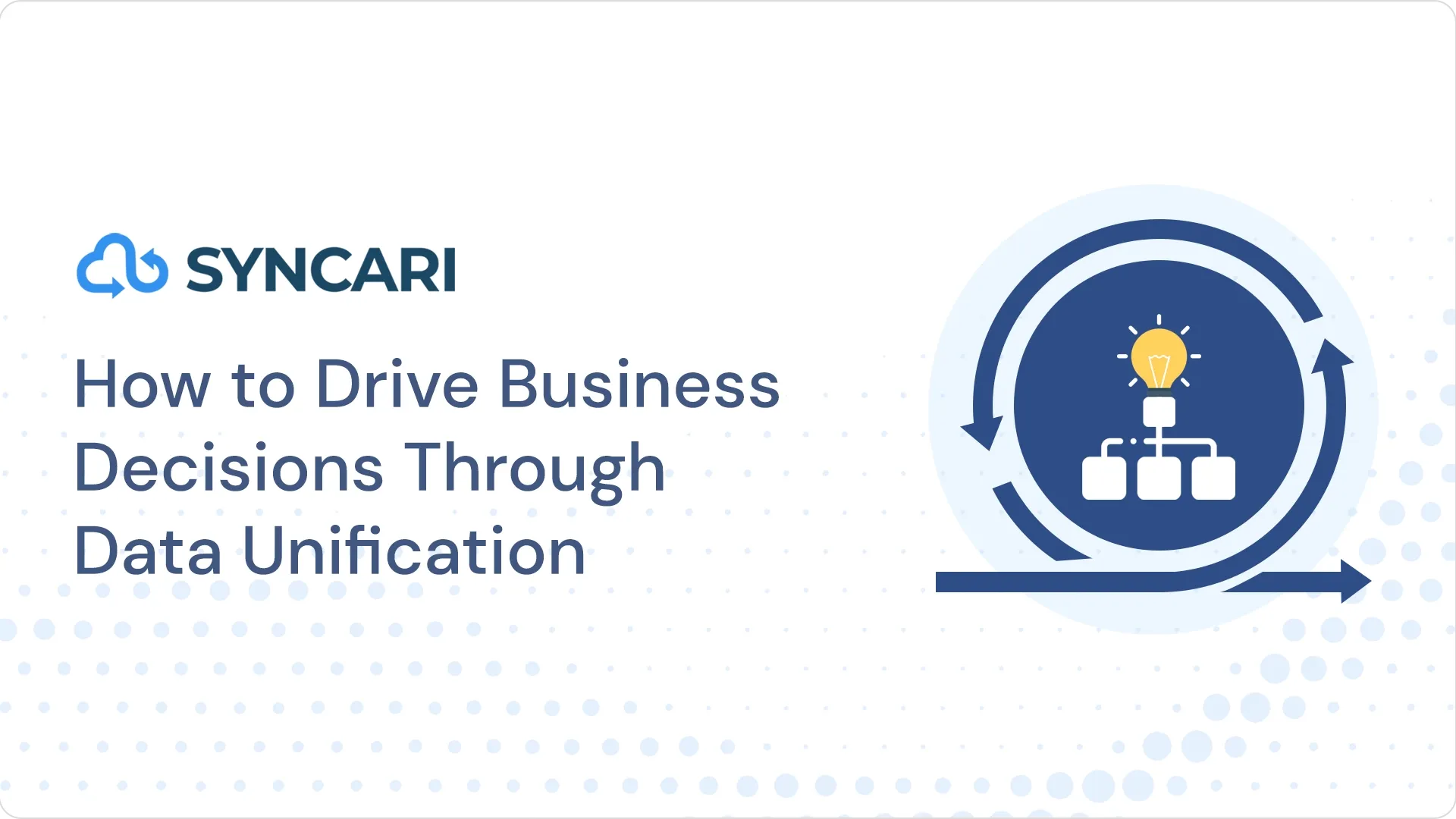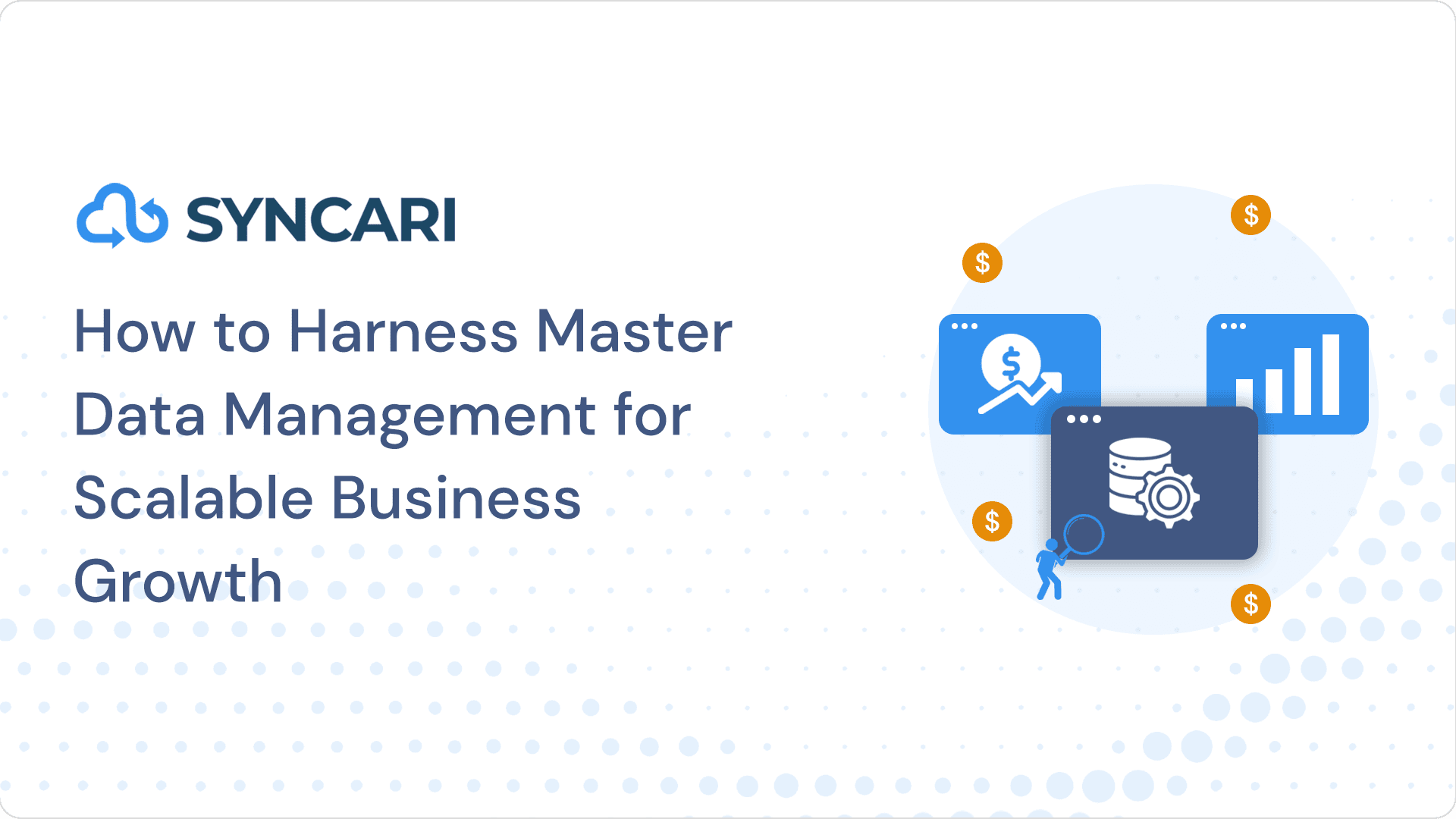In today’s fast-paced business world, integration solutions are a must-have for any enterprise that wants to gain valuable insights from multiple databases, apps, cloud services, and legacy systems. Boomi and MuleSoft are the two most popular integration solutions that companies use to connect cloud and on-premise data automatically. However, these platforms differ significantly in their frameworks, features, and pricing.
In this article, we’ll dive into the detailed comparison between Dell Boomi vs. MuleSoft to help you understand which one best suits your business and customer data automation needs.
| Boomi | Mulesoft |  |
|
|---|---|---|---|
| Pre-built integrations | |||
| Codeless configuration | |||
| Self-healing, resilient connections | |||
| Simple workflow builder | |||
| EDI/B2B data exchanges | |||
| Pre-built templates | |||
| Multi-system sync | |||
| Audit and rollback transactions | |||
| Automatic error handling | |||
| Centralized de-dupe and merge | |||
| Centralized enrichment | |||
| Data Fitness Index | |||
| Data policies and authorities | |||
| Schema management | |||
| Unified data model | |||
| Automatic, secure data storage | |||
| Filterable 360-degree data views | |||
| Inline data editing |
There is a massive difference between the MuleSoft and Boomi platforms in terms of their frameworks. Mulesoft is an API-led network, while Boomi is an ETL middleware platform. Both are cloud integration solutions with different features.
[ Related: Boomi Alternatives (Boomi vs. Syncari) ]
Let us start with a detailed article on:
Boomi vs Mulesoft
While similar, Boomi and MuleSoft have their own unique qualities and benefits. Let’s first review what Boomi and MuleSoft are, what their platforms offer, and some standout capabilities of each tool.
What is Boomi?
Dell Boomi — first launched in 2007, Boomi was founded in Berwyn, Pennsylvania — is a service platform for managing master data, APIs, and information readiness.
In an Integrated Platform as a Service (iPaaS) industry, Dell Boomi is the driving force behind Integrated Platform as a Service (iPaaS), enabling clients to configure cloud-based integration measures called Atoms and move data between cloud and on-premises applications.
The atoms represent those that have a significant impact on the integration of information. Boomi is devoted to becoming a leading organization for creating “Connected Businesses.” In contrast to MuleSoft, Boomi is an all-encompassing platform. Boomi’s Atomsphere consists of the following components:
- Application/data integration
- API management
- B2B/EDI management
- Master data management
- Flow that is Low-code workflow automation and application development
Dell Boomi’s drag-and-drop interface allows users to easily create and manage integrations, without being a technical expert or knowing how to code. What’s more, the platform also offers a wide range of pre-built connectors and APIs, enabling users to quickly connect with popular applications and services.
Boomi’s advanced data mapping and transformation capabilities make it easy to move and transform data between systems, while its powerful workflow automation tools enable users to streamline business processes and increase efficiency. On top of that, its robust security features and comprehensive monitoring and reporting capabilities make Boomi a reliable (and scalable) solution for businesses of all sizes.
What is MuleSoft?
Founded in 2006, MuleSoft, LLC is a software company based in San Francisco, California.
Its innovative Anypoint Platform enables businesses to easily connect applications and data (regardless of where they’re located). So by leveraging MuleSoft’s reusable building blocks, businesses can accelerate their integration efforts and improve overall efficiency.
What’s more, MuleSoft’s powerful tools and integration capabilities enable developers to quickly design, build, and test APIs, while also integrating Salesforce and supporting a wide range of coding languages (such as Python, Java, and PHP). It is possible for many companies to use ETL/ELT functions, including iPaaS.
In addition to Mulesoft’s core integration capabilities, its Anypoint Platform includes a range of components and tools including the Anypoint Design Center, which allows developers to design and build APIs. The Anypoint Manager provides a central location for managing and securing those APIs, while the Anypoint Exchange allows developers to store and access APIs, documents, and other resources.
In addition, MuleSoft’s CloudHub acts as a fully-managed service that eliminates the need for developers to use external software or programs. In contrast, the Anypoint Monitoring tool enables developers to monitor the health of their applications in real-time. So with a comprehensive set of features and powerful integration capabilities, MuleSoft is a leading choice for any size of business looking to connect their applications and data.
By integrating data and projecting it in a unified form, Mulesoft helps users connect with businesses, use various applications, and use different devices around on-premises and cloud computing environments.
Every integration is transformed into a reusable building block. For the development and testing of APIs, MuleSoft uses different tools. MuleSoft is a Next-gen integration platform.
Moreover, the Anypoint Platform by MuleSoft includes various components such as:
- Anypoint Design Centre: It allows API developers to design and build APIs.
- Anypoint Manager: Developers can manage APIs and secure them via API gateways.
- Anypoint exchange: It is helpful to store and access APIs, documents, and other resources.
- CloudHub: This acts as a managed service. So, developers do not need to use any external software or program.
- Anypoint monitoring: This helps to monitor the development team and the health of an application.

So what is the exact difference between Boomi and MuleSoft? Let us understand that part in detail:
Why Choose Boomi?
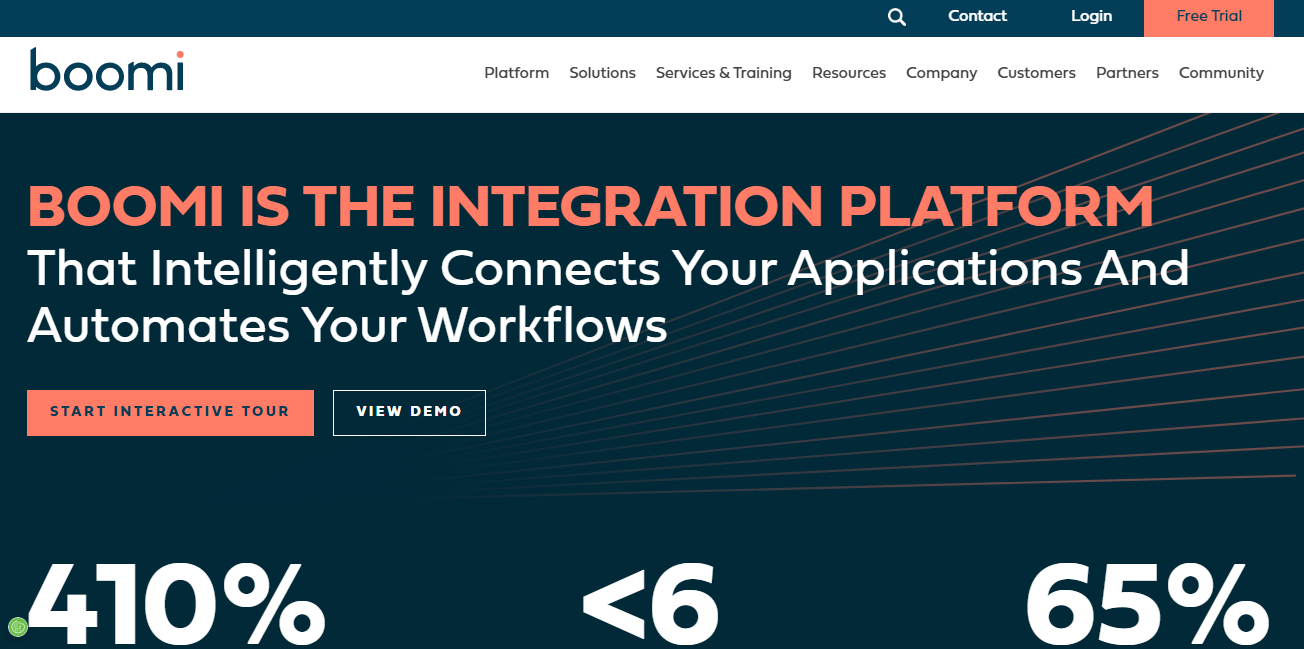 Dell Boomi is a cloud integration platform. You can connect data and people between cloud-based applications and on-premises applications with Dell Boomi.
Dell Boomi is a cloud integration platform. You can connect data and people between cloud-based applications and on-premises applications with Dell Boomi.
Due to Boomi’s cloud-based nature, you can integrate any on-premise or cloud-based source-target combination. The Boomi iPaaS integration tool allows users to extract data from a source, transform it according to their business requirements, and load it into the target.
Using Boomi, customers can manage B2B relationships, design APIs, automate workflows, and build apps. Users can create and accommodate the cloud program using prerequisites and custom code scripts in this cloud stage. For simple applications, it saves both time and unnecessary coding.
Why Choose MuleSoft?
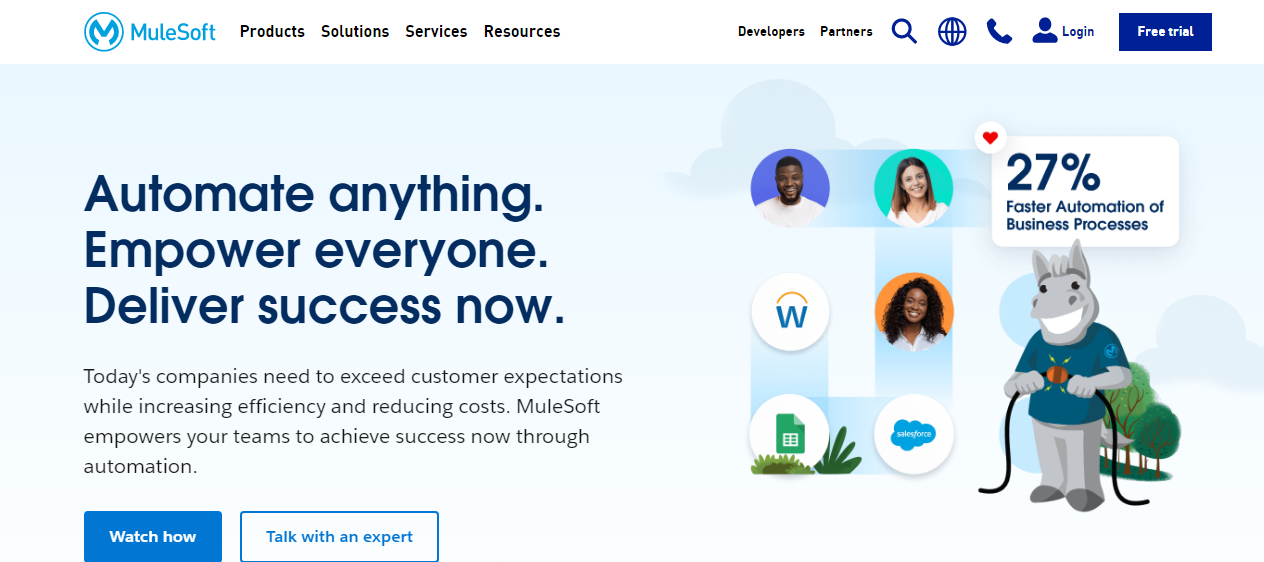
In 2006, Ross Mason founded MuleSoft in San Francisco. With MuleSoft, you can unify data, automate business processes, and build connected experiences. This platform allows the integration of applications, data, and devices with API. It acts as a bridge between enterprise-level applications and clouds.
This ecosystem contains a variety of products that companies rely on. This platform has a well-designed studio that facilitates development and eases maintenance. MuleSoft allows you to connect a wide variety of applications. The advantage of MuleSoft is that it is more durable, creative, and environmentally conscious.
Pricing Comparison: Boomi vs MuleSoft
The first difference between the Boomi and MuleSoft platform is their pricing.
Boomi: The Dell Boomi plans are billed monthly, starting at $549 per month, and a 30-day free trial is available.
MuleSoft: MuleSoft offers a 30-day free trial. There is no information about pricing, but we’ve done a deeper analysis of Mulesoft’s pricing here.
Boomi vs MuleSoft – Features Comparison
Both these tools are excellent for master data management, but the features and integration process varies for business units. They support multiple apps, including online and offline apps.

So here are a few features that separate their processing power:
Integration features
Boomi’s data integration platform breaks down organizational silos by connecting data and devices across organizations and locations. The process is made more accessible by an extensive library of prebuilt connector tools.
Boomi has ready-to-use connectors that connect external services such as AWS, Shopify, or Marketo to AtomSphere. The connectors contain all the data necessary to create the link.
Once on-premise integration solutions or connectors are built, it is deployed through a small dynamic runtime engine called Atom, which enables centralized monitoring by sending details of all real-time execution activity to AtomSphere. It is possible to install Atom locally or use a cloud-based version.
MuleSoft is similar to Boomi in that it offers a connector library that makes it easy to integrate its platform with hundreds of other products. With repeatable integrations, users can streamline their workflows even having to know what is coding.
MuleSoft integrates data in a different way. MuleSoft’s Mule engine is the runtime engine that enables integration, and it works with on-premises, cloud, and hybrid infrastructures. People can also create customized modules using Mule if the connectors don’t meet their needs.
Ease of use
There are numerous features in both of these iPaaS products that make them simple to use, regardless of how tech-savvy a person is.
Boomi Suggests automating mapping data using algorithms and crowdsourcing. When those resources are combined, they create a level of confidence about which fields to map. In addition, Filter Suggest automates aspects of connector configuration to improve productivity.
Crowdsourcing is not just how Boomi automates data mapping. By leveraging collective input from other users, Boomi speeds up error message resolution. The Boomi Resolve feature, specifically, suggests likely ways of fixing problems based on what other users have tried.
Boomi Assure then submits your integration processes and associated data to the company for testing. As a result, there is a reduced likelihood of unintended consequences arising from updates.
A data mapping feature is also available in MuleSoft. However, there is no crowdsourcing component involved here. With the platform’s drag-and-drop capabilities and integration templates, users can accelerate their workflows even further.
MuleSoft also includes a Teams feature, which enables administrators to group people to reduce repetitive tasks. For instance, people using Teams can define their roles and then assign them to users with one click.
It is also possible to set global permissions. MuleSoft decided to make the Teams feature an opt-in update. It means workplaces can start using it when ready and revert to older versions that don’t include Teams if desired.
ETL suitability
Boomi’s official user forum indicates that some users have used the platform to fulfill their ETL needs, despite the fact that its ETL features are not its primary focus. Boomi has mentioned in one of its posts about its positioning that iPaaS platforms are superior to ETL tools.
Boomi doesn’t mean it won’t meet your ETL needs, but you might not be able to get support easily if you need it.
On the other hand, MuleSoft has specific guidance for people who intend to use the Anypoint Platform for ETL. According to the company, DataWeave is their best solution for data integration.
MuleSoft offers a graphical data-mapping interface and a browser-based flow designer, which allows you to synchronize data from multiple silos. MuleSoft also offers tutorials and assets related to ETL through the Anypoint Exchange hub.
Those who require robust ETL functionality in their iPaaS tool will be more satisfied with MuleSoft than Boomi. Boomi’s official content does not make suggestions about or assist people in using the platform for ETL purposes, unlike MuleSoft, which actively caters to ETL users and provides instructional content to help.
The transformation process
In Boomi, processes are executed through a system called shapes. It underpins several prebuilt changes inside its different shapes (such as text encoding, encryption/decoding, search/replace, and records).
It also allows clients to make custom preload changes by coding Groovy or JavaScript content to change information from the source application into a configuration that the target can utilize.
MuleSoft, on the other hand, has some expertise in application integration, i.e., moving information starting with one application or platform then onto the next. Each application has characterized information structures.
Therefore, MuleSoft frequently needs to modify information from a source to fit the objective outline. There are more than 20 prepackaged ‘transformers’ in MuleSoft, and engineers can write their own custom processors using scripting dialects such as Groovy and JavaScript.
API management
An effective application program interface (API) is crucial for organizations that wish to invest in integration platforms. A set of schedules and devices for constructing organization-specific programming applications demonstrates how proficiently each part of an information integration framework interface works.
IT pioneers Boomi and MuleSoft are both leaders in API management. Recently, APIs have become more complicated and expensive to manage on a daily basis. MuleSoft has struggled to serve advanced business ecosystems efficiently as platforms like Boomi have developed more effective API execution techniques.
MuleSoft’s Application Programming interface Management is one of its specialties and an extraordinary selling point if you plan on working with them. But Boomi proved to be its solid rival in API management. Some of its highlights include:
The ability to make APIs rapidly from new or old cycles, applying significant value to make high-quality coordination measures.
The cloud-native feature of Boomi’s platform is ideal for planning, convey and oversee APIs in a more effective way,
Compared with MuleSoft, Boomi measures APIs more quickly, providing time-efficient results.
The dispersed approach of Boomi’s AtomSphere runtime motor enables it to best serve a wide variety of hybrid frameworks by using APIs where necessary.
Other Important Features:

Boomi Vs. MuleSoft
MuleSoft offers on-premise, on-cloud, and hybrid integration solutions, while Boomi only offers on-premise and on-cloud integrations. There are many similarities between the two, but they differ in terms of coding, pricing, APIs, and other factors. Below are a few of the most significant differences between Boomi and MuleSoft.
Coding:
MuleSoft requires complex or heavy coding, while Boomi uses simple or no coding.
Data mapping:
Boomi offers smart data mapping. Data mapping is not available in Mulesoft.
Data lake connection:
MuleSoft does not have a data lake connection, unlike Boomi.
Data warehouse connections:
Boomi supports data warehouse connections. MuleSoft does not support data warehouse connections.
Versioning:
Boomi comes with a built-in versioning system. MuleSoft has six different runtime engines.
So which is better? Boomi or MuleSoft? MuleSoft and Boomi are both good choices for businesses that need to integrate disparate systems. Comparatively, Dell Boomi is less complicated and more feature-rich than MuleSoft. But MuleSoft also performs perfect data integration and ETL tasks. Hence, it is your choice, depending on your business requirements.
But what if we tell you there is a much better option than these two? Yes! It exists.
It is a data automation platform that helps business leaders regain control over their data and restore data confidence.
Syncari – The Ultimate Data Integration Tool
It is the best tool to sync your stack for better performance. With Syncari Synapses, data and schema changes are managed throughout the GTM stack instead of being limited to a few API-based connectors. They are fault-tolerant and easy to configure – so you can focus on your business rather than APIs and integrations.
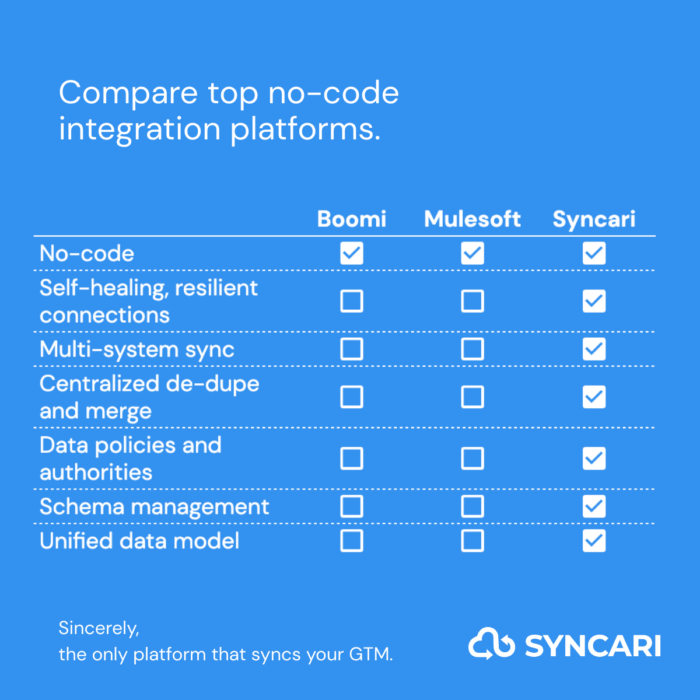
Syncari is your go-to platform that unifies cross-system records in our data hub and aligns attributes to a unified data model tailored to your business logic. They also have a multidirectional sync engine that shares trusted data everywhere it’s needed. This way, it keeps views in sync as better data emerges.
Syncari Pricing
Syncari’s pricing is based on the number of records you manage, making it easy to predict costs and avoid unexpected expenses. Each Syncari instance includes pipelines, connectors, API calls, tasks, and transactions. Build unlimited pipelines, connect multiple systems, and run them as often as needed, all without worrying about additional costs.
Why Choose Syncari?
A multidirectional data synchronization system
Their patent-pending sync engine governs cross-system transactions to align data across teams.
A centralized revenue data management system
Using drag-and-drop business logic, you can normalize, standardize, enrich, and dedupe data.
Operational analytics across multiple systems
You can calculate metrics and KPIs with unified data and track full-funnel performance.
Data-model-driven orchestration
Share real-time insights in the right place with no-code workflows that read unified customer data.
Syncari’s data automation platform helps operations professionals unify, clean, manage, and distribute trusted customer data across the enterprise. The Syncari platform combines data management, workflow automation, and bi-directional syncing to restore data trust.
So visit their website today and get the customized package for your enterprise.
